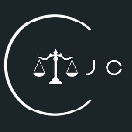CJC-F, CJC-F Announcements
Turning to illicit drugs is like throwing a die, flipping a coin, or even picking a card – it is like gambling. American songwriter Jim Morrison once said “Drugs are a bet with your mind”. You go out for a night of fun and after a couple of pills, you might not know where you would end up the next day. It could work out well, but it could otherwise be disastrous. 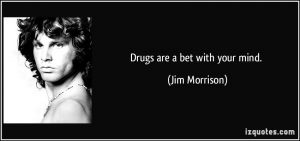
Source: https://quotesgram.com/img/jim-morrison-quotes-on-drugs/367239/
The War on Drugs
There are primarily seven classifications of drugs: Narcotic Analgesics, Hallucinogens, Central Nervous System (CNS) Depressants, CNS Stimulants, Dissociative Anaesthetics, Inhalants and Cannabis. These drugs can be categorized based on certain shared symptoms or the effects that they have. Additionally, they can be further classified according to their chemical properties, acidic and basic properties, which can be used for identification. Some of the commonly encountered controlled drugs and their properties can be seen from the table below.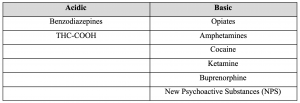
Table 1: Panel of drugs tested in Health Sciences Authority (HSA) categorized by their chemical properties
Over the years, the global drug market has been expanding rapidly and becoming increasingly complex. New substances are entering the market and concurrently, laboratories need to be well-equipped with advanced analytical instrumentations to identify these new illicit drugs. Evidently, the constant evolution of laboratory-based drug testing can be seen from the introduction of urine drug testing, hair drug testing, and other upcoming potential drug testing methodologies. This includes making use of only fingerprints and oral fluids to detect excreted metabolites of drug abuse.
As established from the previous article, there are four main types of drug offences in Singapore: Possession, Consumption, Trafficking, and Importation. For the Possession, Trafficking, and Importation offences, drugs seized are analysed both qualitatively (identification of drugs) and quantitatively (quantity of drugs) in the laboratory. On the other hand, for the Consumption offences, the suspected subject would have to undergo tests like urine and hair tests to determine the quantity and types of drugs consumed. The respective penalties are then given subsequently, according to Singapore’s legal system, based on the offences committed as well as the results of the examinations.
The Different Departments
In Singapore, there are several different agencies with the expertise of drug testing – the Health Sciences Authority (HSA) and the Forensic Experts Group (TFEG) are such examples. As a government agency, the HSA possesses the resources to host both the Illicit Drugs Laboratory (IDL) as well as the Analytical Toxicology Laboratory (ATL). The IDL analyses controlled drugs from seizures and assists in clandestine drug laboratory investigations. On the other hand, the ATL analyses biological fluids and forensic exhibits for drugs and poisons. In other words, the IDL primarily focuses on seized physical drugs, whereas the ATL focuses on the consumed drugs. Other than these two laboratories, there are also other forensic labs in the HSA working closely together with them.
For example, the HSA Forensic Medicine Division and the ATL work hand in hand to determine if there are any drugs or poisons which could have contributed to the victim’s death. Such collaborations support the law enforcement agencies as well as health institutions like hospitals and medical clinics.
TFEG, as a non-governmental agency based in Singapore, provides expert forensic services not just locally, but in Asia, the USA and UK as well.

Source: https://www.hsa.gov.sg/ & https://lawgazette.com.sg/practice/practice-support/engaging-and-working-with-a-forensic-expert/
The Scrutinization of Mediums
At this point, one key question you might ponder would be: How exactly is the analysis of drugs done in these laboratories? There are several robust testing methods used in these laboratories for drug testing and it is crucial to dissect each of them carefully. However, before diving into the technicalities, it is also pivotal to understand the different substances obtained for analysis. For the IDL, the seized drugs are often already in a physical state ready for drug analysis. On the other hand, for the ATL, the complexity of the biological samples collected increases the difficulty of analysis.
There are primarily two types of substances entrapping drug specimens – biological and non-biological samples. Non-biological samples refer to samples from water sources, drug formulations, ambient air and more. They are usually less complex to analyse, as compared to biological samples, and are less time sensitive and abundant. In contrast, biological samples like blood, urine, and saliva samples (samples the Analytical Toxicology Laboratory focuses on) are highly complex, more time sensitive and limited. These samples are also known as mediums in which drugs can be found after consumption.
Specifically, the Drug Abuse Testing unit in the ATL analyses urine and hair specimens for the presence of controlled drugs. Since urine samples are available in considerably larger amounts, as compared to other biological samples, and hair samples allow for long-term retention of analytes, they are usually preferred for analysis.

Source:: https://www.quora.com/What-is-the-chemical-composition-of-urine & https://activilong.com/en/content/95-structure-composition-of-the-hair
The qualification and quantification analysis obtained from these mediums would then be used as evidence in court.
Analytical Instruments
Generally, there are two testing methodologies typically used by experts for drug analysis. They are Gas Chromatography-Mass Spectrometry (GC-MS) and Liquid Chromatography-Mass-Spectrometry (LC-MS)
GC-MS and LC-MS are the two most employed techniques by the drug testing agencies today for the qualification and quantification of drugs seized. They are heavily utilised for the detection of targeted compounds present in samples such as complex biological specimens, as well as raw materials. The objective of both GC-MS and LC-MS is to separate and analyse the target compounds of interest from the sample mixture. GC-MS is typically used for volatile samples that can be easily vaporised, whereas LC-MS is used for non-volatile samples.
The GC works on the principle that a mixture will separate into individual substances when heated. As such, the heated gases are typically carried through a column with an inert gas and emerge from the column opening as separated substances before flowing into the MS. In comparison, the LC is more ideal for molecules which might not be suitable to undergo GC-MS, also known as polar and non-volatile molecules. The samples are also usually carried out in a column (packed with different particles) and emerge from the column opening as separate compounds after interacting with them, and flowing into the MS. The MS then identifies compounds passed from the GC or LC by scrutinising the mass of the analyte molecule as an analytical detector.
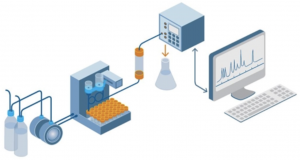
Source: http://hiq.linde-gas.com/en/analytical_methods/liquid_chromatography/index.html#:~:text=Liquid%20chromatography%20(LC)%20is%20a,a%20column%20or%20a%20plane.
Furthermore, there are also other less commonly utilised analytical testing methods employed such as Raman Spectroscopy and Atomic Absorption Spectroscopy.
Raman Spectroscopy is an analysis technique that enables rapid qualitative and quantitative detection of the chemical compounds present. Through the study of vibrational transitions in molecules, the Raman Spectroscopy presented itself as a fast and non-destructive instrument for analysis of drugs in different product states.
Lastly, the Atomic Absorption Spectroscopy (AAS) is also a technique commonly used to analyse compounds in solid or liquid samples. The AAS detects elements by looking at the different absorbance of wavelengths from a light source. By taking advantage of the characteristic that individual elements have different absorbance of electromagnetic radiation, the AAS has an unlimited number of applications.
The Key to Understanding
Singapore has strict laws against drug abuse. The Misuse of Drugs Act (MDA) is the main legislation for drug offences in Singapore. It provides for the enforcement powers of Central Narcotics Bureau (CNB) and the penalties for various drug offences, including trafficking, manufacturing, importation or exportation, possession, and consumption of controlled drugs. However, despite the penalties put in place, drug abuse in Singapore is still on the rise and continues to be a problem as reflected in CNB’s latest figures in 2019. The largest group of drug abusers in Singapore belong to individuals who are aged between 20 and 29, and 41% of the arrested abusers were new drug abusers.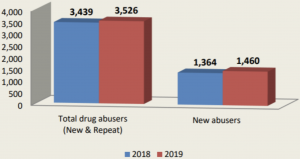
Source: https://www.cnb.gov.sg/docs/default-source/drug-situation-report-documents/cnb-annual-statistics-2019.pdf

As such, the current drug situation in Singapore still requires intensive enforcement efforts against drugs and more efficient testing methodologies. Scientific and technological breakthroughs like the Next-Generation Reporting Centre (NGRC), which significantly improves the efficiency of urine tests, automating the printing and pasting of labels on urine specimen bottles, are required for the progress of Singapore’s current testing methods. Above all, the key to understanding the science behind drug offences would ultimately be to master the fundamental methodologies and to constantly evolve.
*The views and opinions expressed in this article do not constitute legal advice and solely belong to the author and do not reflect the opinions and beliefs of the NUS Criminal Justice Club or its affiliates.
References
A quote by Jim Morrison. (n.d.). Retrieved December 17, 2020, from https://www.goodreads.com/quotes/368668-drugs-are-a-bet-with-your-mind-it-s-like-gambling
7 Drug Categories. (n.d.). Retrieved December 17, 2020, from https://www.theiacp.org/7-drug-categories
Illicit drugs. (n.d.). Retrieved December 17, 2020, from https://www.hsa.gov.sg/about-us/applied-sciences/illicit-drugs
Bailey, M., Bradshaw, R., Francese, S., Salter, T., Costa, C., Ismail, M., . . . Puit, M. (2015, May 01). Rapid detection of cocaine, benzoylecgonine and methylecgonine in fingerprints using surface mass spectrometry. Retrieved December 17, 2020, from https://pubs.rsc.org/en/content/articlelanding/2015/an/c5an00112a
Singapore’s Drug Laws: Possession, Consumption and Trafficking. (2020, December 01). Retrieved December 17, 2020, from https://singaporelegaladvice.com/law-articles/what-are-singapores-laws-on-drug-consumption/
Analytical toxicology. (n.d.). Retrieved December 17, 2020, from https://www.hsa.gov.sg/about-us/applied-sciences/analytical-toxicology
Decoding poisons. (n.d.). Retrieved December 17, 2020, from https://www.hsa.gov.sg/careers/articles/decoding-poisons
Forensic Science Services Experts: The Forensic Experts Group. (n.d.). Retrieved December 17, 2020, from https://www.forensicexperts.com.sg/
Raman spectroscopy for the analysis of drug products and drug manufacturing processes. (2017, June 08). Retrieved December 17, 2020, from https://www.europeanpharmaceuticalreview.com/article/1896/raman-spectroscopy-for-the-analysis-of-drug-products-and-drug-manufacturing-processes/
Liquid chromatography. (n.d.). Retrieved December 17, 2020, from http://hiq.linde-gas.com/en/analytical_methods/liquid_chromatography/index.html
Atomic Absorption Spectrometry (AAS) Information. (n.d.). Retrieved December 17, 2020, from https://www.thermofisher.com/sg/en/home/industrial/spectroscopy-elemental-isotope-analysis/spectroscopy-elemental-isotope-analysis-learning-center/trace-elemental-analysis-tea-information/atomic-absorption-aa-information.html
Central Narcotics Bureau (2020, June 12). News Release. Retrieved December 17, 2020, from https://www.cnb.gov.sg/docs/default-source/drug-situation-report-documents/cnb-annual-statistics-2019.pdf
Wen-Yi, L. (2018, May 22). New and more efficient urine sample testing system for drug supervisees in the works. Retrieved December 17, 2020, from https://www.straitstimes.com/singapore/new-and-more-efficient-urine-sample-testing-system-for-drug-supervisees-in-the-works
AUTHORS’ BIOGRAPHY
 Leona Ang Qiao En is a Year 3 undergraduate from the Faculty of Science (NUS). She is currently pursuing a Bachelor’s (Hons) degree in Data Science and Analytics with a minor in Forensic Science. She is also one of the managers of the mini-project titled “Cyber-forensics & Cyber-security”. She has a keen interest in areas such as forensic science as well as crime scene investigations. In terms of leisure activites, Leona enjoys activities such as dancing in order to stay active.
Leona Ang Qiao En is a Year 3 undergraduate from the Faculty of Science (NUS). She is currently pursuing a Bachelor’s (Hons) degree in Data Science and Analytics with a minor in Forensic Science. She is also one of the managers of the mini-project titled “Cyber-forensics & Cyber-security”. She has a keen interest in areas such as forensic science as well as crime scene investigations. In terms of leisure activites, Leona enjoys activities such as dancing in order to stay active.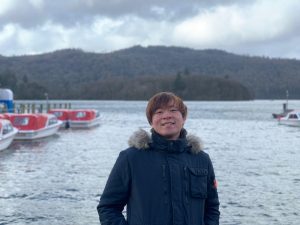
Tay Bo Wen Thomson is a Year 4 Chemistry student in NUS, pursuing a minor in forensic science. He is currently completing his Final Year Internship in the Health Sciences Authority (HSA) of Singapore, working in the Analytical Toxicology Laboratory (Drug Abuse Testing). As one of the project managers of the “Forensics in Drug Offences”, he directs the newsletter publication with his co-managers and guides the team with his scientific knowledge in drugs. Thomson also has great passion in criminology and forensic sciences, aspiring to be a police officer in the Singapore Police Force in the future.
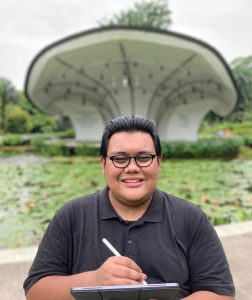
Muhammad Khairul Fikri is a Year 3 undergraduate from the Faculty of Arts and Social Sciences. Khai is one of the Project Managers of “Drugs & Forensics”. He is pursuing a Major in Geography and two Minors; Forensic Science and Geographical Information Systems. He is interested in the applications of technology, particularly geospatial technologies, in forensic science and crime scene investigations.
